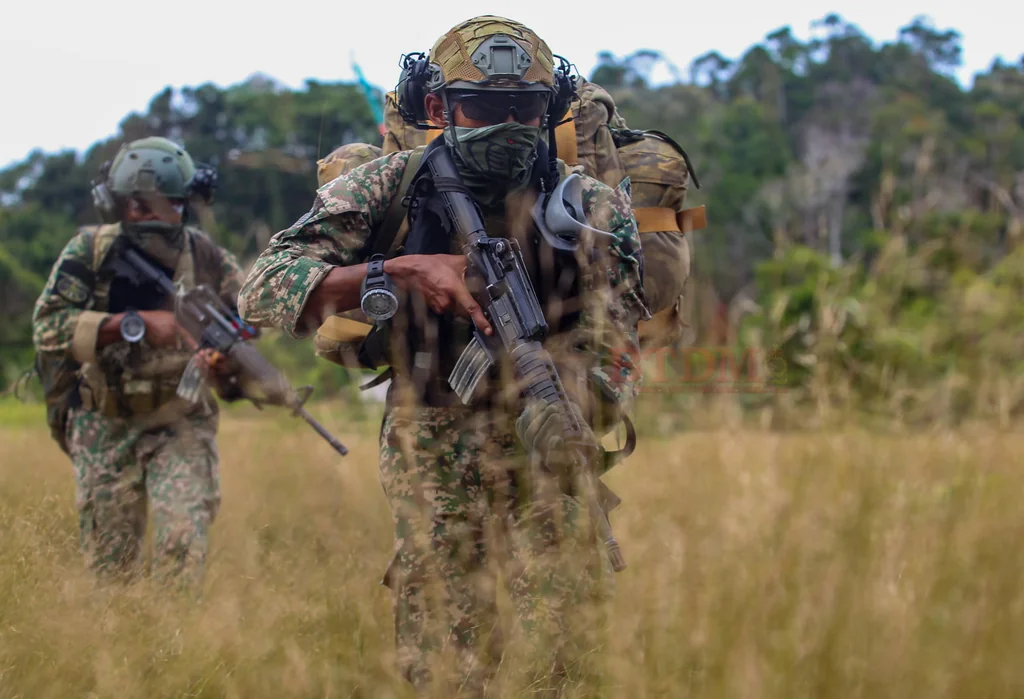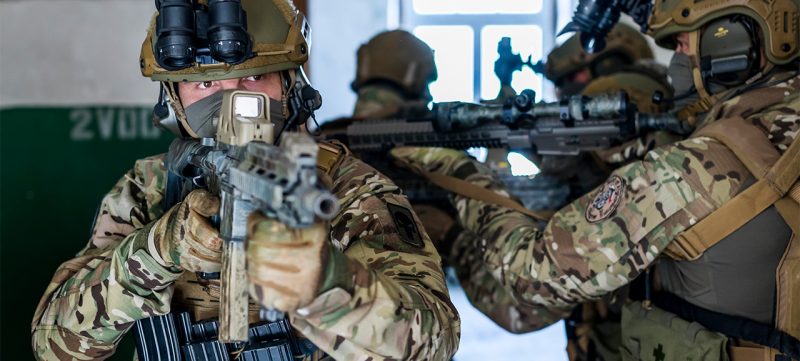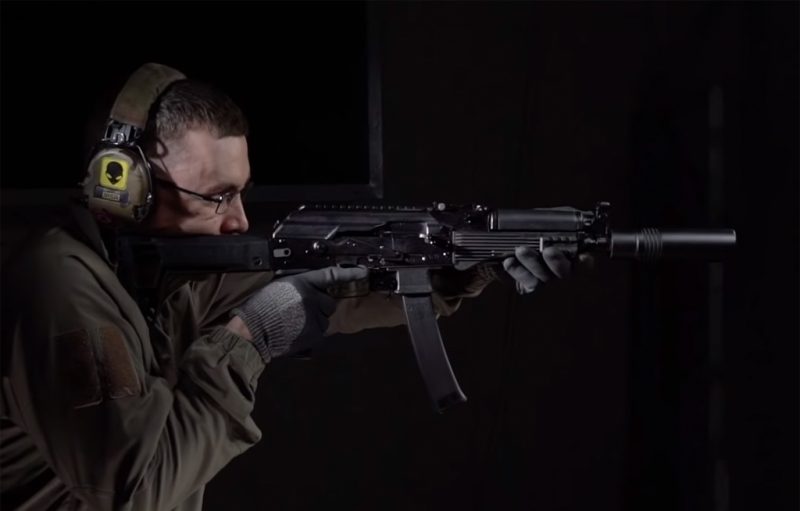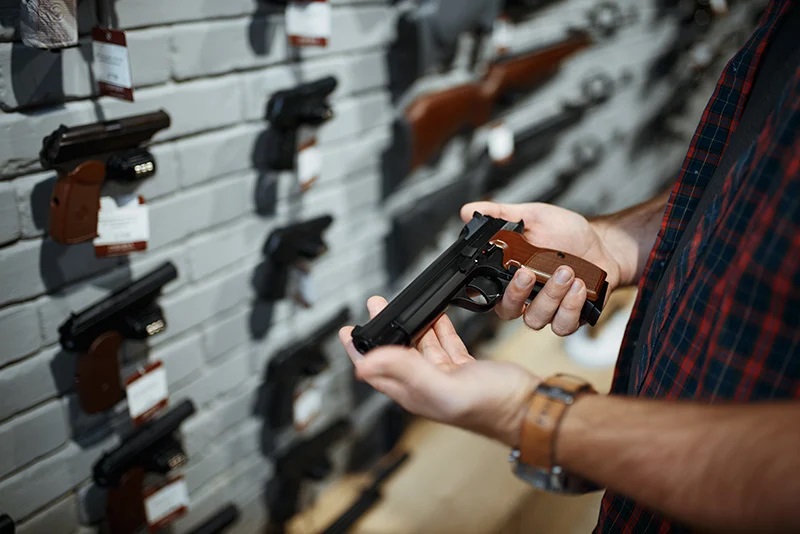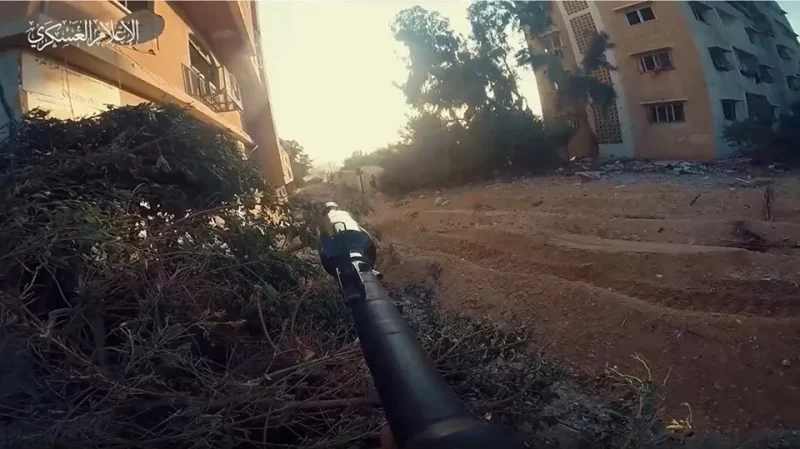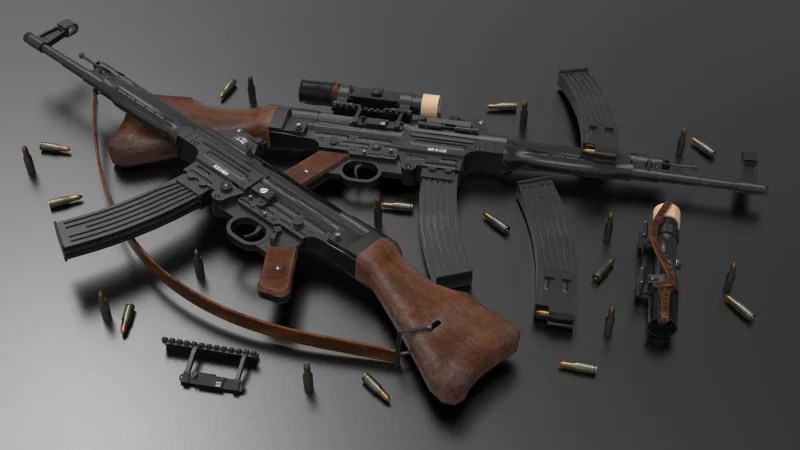The 21 Gerup Gerak Khas, also known as the 21st Special Service Group, is a command for the elite special forces of the Malaysian Army known as Gerak Khas. The 21 GGK and the 10th Parachute Brigade are premier fighting units within the Malaysian Army. Both units are independent and report directly to the Chief of the Army. The 21 GGK’s headquarters is at Iskandar Camp in Mersing, Johor. As of September 6, 2021, the current commander of the 21 GGK is Major General Nubli Hashim, who succeeded Major General Datuk Jamaluddin Jambi.
Introduction
21 Gerup Gerak Khas (21 GGK) is the special forces unit of the Malaysian military. Within the organization of Malaysian Special Operation Forces, the Navy has a specialized unit called PASCAL, the Air Force has a unit called PASKAU, and the Malaysian Police has merged units VAT 69 and UTK to create a new unit called Pasukan Gerukan Khan.
Mission
In terms of structure and organization, it operates like a brigade-sized unit (regiment) and is responsible for various tasks, including security and force development. The primary objectives of 21 GGK include locating, reporting, tracking, and destroying enemy troops, particularly special forces, and deep infiltration and cooperation with guerrilla and partisan forces in areas under enemy control. Additionally, 21 GGK is responsible for planning, preparing, and implementing unconventional warfare methods, internal defense, patrol, and enforcement, all with the support of the state police within a specific area of operations.
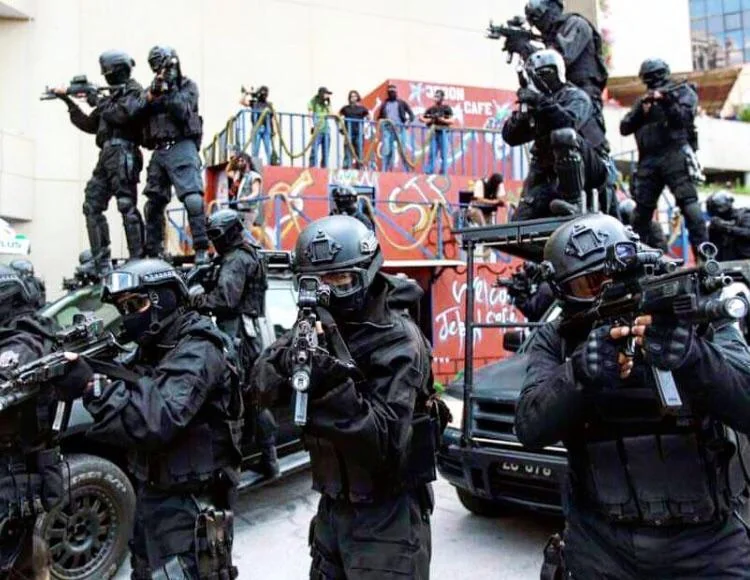
21 GGK is dedicated to consistently planning, fostering, and implementing various forms of unconventional warfare, including guerrilla warfare, anti-guerrilla tactics, sabotage, subversion, counter-terrorism activities, and, most notably, jungle warfare. A significant portion of 21 GGK’s reputation is built on its experience and expertise gained during combatting communist insurgency. The unit specializes in direct action and special reconnaissance missions and is highly skilled in executing these operations.
Organization
Currently, 21 Gerup Gerak Khas (21 GGK) is organized as a brigade consisting of three battalions: 21st, 22nd, and 11th. The unit has a long history of participating in UN peacekeeping operations as part of Malaysia’s military presence in Cambodia, Somalia, Western Sahara, Namibia, and Bosnia and Herzegovina.
A Brigadier General leads the organization of 21 GGK, and its headquarters is in Kem Iskandar, Mersing (Johor province). The 21 GGK serves as the chief administrative and operational unit for the Malaysian Special Forces. Its three operational battalions and logistics support can support the operations of other special forces of the Navy and Air Force, Police, and regular Malaysian OS.
| Unit’s name (English) | Unit’s name (Bahasa Malaysia) | Abbreviation | Headquarters | Specialty and purpose |
| 11th Special Service Regiment | 11 Rejimen Gerak Khas | 11 SSR | Sungai Udang Camp | The 11th Special Service Regiment is a premier special forces unit in the Malaysian Army and one of the 21st SSG’s three combat units. 11 SSR is also known as the 11th Unit Lawan Keganasan (Abbr.: 11 ULK), or the 11th Counter Terrorism Unit in English. Its responsibilities include counter-terrorism, hostage rescue, and close protection. |
| 21st Commando Regiment | Rejimen 21 Komando | 21 Cdo | Sungai Udang Camp | The 21 Cdo is one of 21 SSG’s three combat units. The 21 Cdo task is similar to the 22 Cdo task, but 21 Cdo is more focused on airborne operations. Its responsibilities include unconventional warfare, direct action, counter-insurgency, and special reconnaissance. |
| 22nd Commando Regiment | Rejimen 22 Komando | 22 Cdo | Sri Iskandar Camp | The 22 Cdo is one of 21 SSG’s three combat units. The 22 Cdo task is similar to the 21 Cdo task, but 22 Cdo is more focused on waterborne operations. Its responsibilities include unconventional warfare, direct action, counter-insurgency, and special reconnaissance. |
| Garrison Command | Markas Garison | Mk Garison | Sri Iskandar Camp | The Mk Garison is a company-sized administrative support unit tasked with assisting the 21 SSG in administrating the Sri Iskandar Camp. |
| 21st Logistics Group | 21 Kumpulan Logistik | 21 Kump Log | Sri Iskandar Camp | The 21 Kump Log is a battalion-sized special operations support unit tasked with providing combat service support to all units under the command of the 21 SSG, such as logistics. The 21 Medic and 21 Kump Log, formed in 2017, is the 21 SSG’s newest unit. The 21st SSG’s service support companies were merged into this unit, which now has three squadrons: the 21st Materials Squadron, Royal Ordnance, the Service Squadron, Royal Service, and the 21st Workshop Squadron, Royal Service. |
| 21st Signals Squadron, Royal Signals | 21 Skuadron Semboyan Diraja | 21 SSD | Sri Iskandar Camp | The 21 SSD is a special operations combat support unit tasked with providing communication support to all units under the command of the 21 SSG. |
| 21st Medic Squadron | 21 Skuadron Medik | Sri Iskandar Camp | The 21 Medic is a special operations support unit tasked with providing medical support to all units under the command of the 21 SSG. The 21 Medic and Logistics Team, established in 2017, is the 21 SSG’s newest unit. Among its responsibilities is providing special operations combat medics and medical care to all special forces members and their families at all army camps occupied by the 21 SSG. | |
| 21st Company, Royal Military Police | 21 Kompeni Polis Tentera Diraja | 21 KPTD | Sri Iskandar Camp | The 21 KPTD is a military police unit enforcing the law in the 21 SSG and Sri Iskandar Camp. |
| 21 SSG’s BAKAT | BAKAT 21 GGK | Sri Iskandar Camp | Family welfare support for the group. |
History
The 21st Special Service Group, previously known as the 1st Malaysian Special Service Regiment, was established on August 1, 1970, at Sungai Udang Camp in Malacca. This unit is the direct successor to the Malaysian Army’s special operations task force, known as the Malaysian Special Service Unit. It is also considered the spiritual successor to Malaysia’s first modern special forces unit, the Malayan Special Forces.
The history of the Malaysian Special Forces dates back to 1960 when the Ministry of Defense established the Directorate (Command) Special Forces under the initiative of then Minister of Defence Allahyarhama Tun Abdul Razak bin Hussein. The Malaysian-Indonesian military conflict prompted the establishment of the Directorate, leading to the formation of the first Malaysian marine special unit, modeled after the British Marines. The unit was given the general title of “Malaysian special forces.”
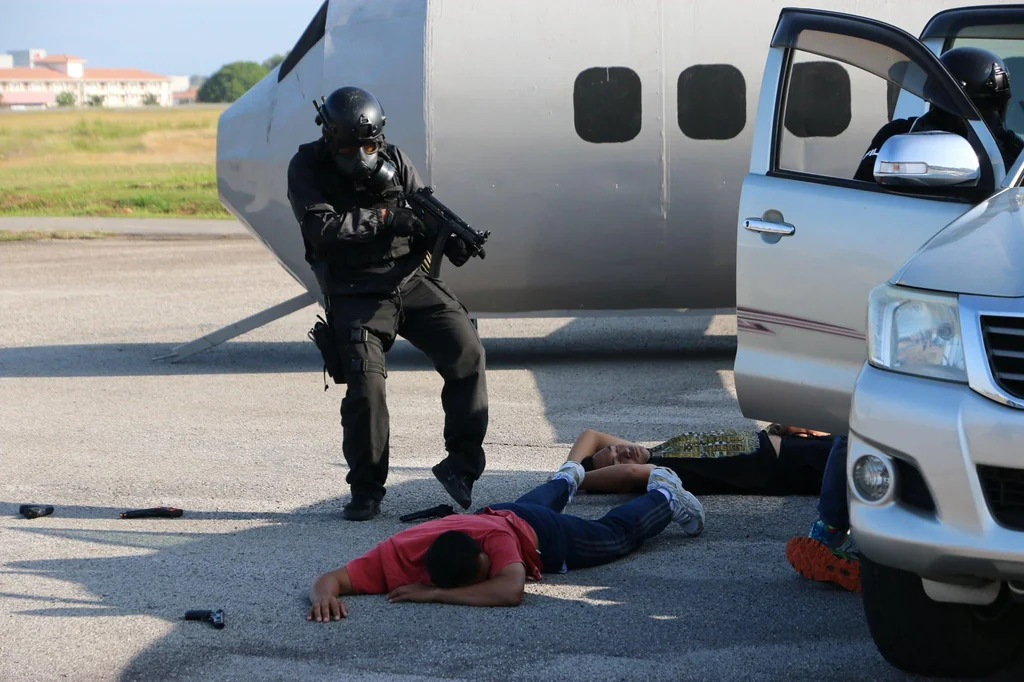
In January 1981, a Malaysian Special Service Command headquarters called MARKAS Gerak Khas was formed in Kuala Lumpur, with the responsibility of commanding a pre-organized brigade consisting of three battalions. In addition to combat operations, the newly formed command headquarters oversaw support and logistical units. The official name Gerup Gerak Khas was later added with the number 21, officially denoting the 21st Brigade within the Malaysian Army forces.
The command of 21 GGK now integrates three battalions of special segments and combat support units such as signal corps, engineers, and other logistics elements. The structure of this Brigade comprises three battalions, with the 21st and 22nd Battalion configured as commando Assault Battalions. These two battalions have a strength of around 1800 members each and specialize in deep reconnaissance (LRRP), standard patrol, sabotage, covert operations, aircraft, and amphibious landings, among other commando operations. The organization of these two battalions is similar to that of British commandos. Each Battalion has a specialized line, such as a naval assault boat or a general transport platoon. In addition to the 21st and 22nd Battalion, the third Battalion, the 11th Battalion, is a special unit intended for the most complex and risky raids on enemy leaders or objects of strategic importance. This Battalion is numerically smaller than the 21st and 22nd Battalion and is organized into four highly mobile companies. Membership in the 11th Battalion is limited to those who have served in the 21 GGK for at least eight years and are considered the elite within 21 GGK.
Within 21 Gerup Gerak Khas (21 GGK), a small group of approximately 100 members is known as the Special Operational Cell. Their main task is to organize and coordinate the material resources and equipment for 21 GGK, provide support to combat elements in the development of operational forces in the field and directly support the command structures of 21 GGK. They are also responsible for planning, implementing, analyzing, and disseminating intelligence information gathered during the activities of their members.
Selection and training
The PULPAK (Pusat Latihan Peperangan Khas) training center, an organization for special forces training, was established on August 1, 1976. Before its integration into 21 GGK, members of the organization underwent basic and specialized training within 21 RGC (currently the 21st Battalion). Despite the substantial capabilities and capacities available to PULPAK, it still provides significant support in training other Malaysian special units, particularly the elite 11th Battalion. The training center also plays a key role in implementing training courses for Special Weapons and Tactics (SWAT) teams of regular Police and military personnel with special requirements.
21 GGK Training conducts its specialty training in close cooperation with the Indonesian Kopassus Special forces, whose base in Sungai Undag is less than an hour’s helicopter flight away. They also often plan and conduct multinational exercises with the British SAS and Australian and New Zealand special forces, especially with the 1st Special Forces Group of the U.S. Army stationed in Okinawa, Japan.
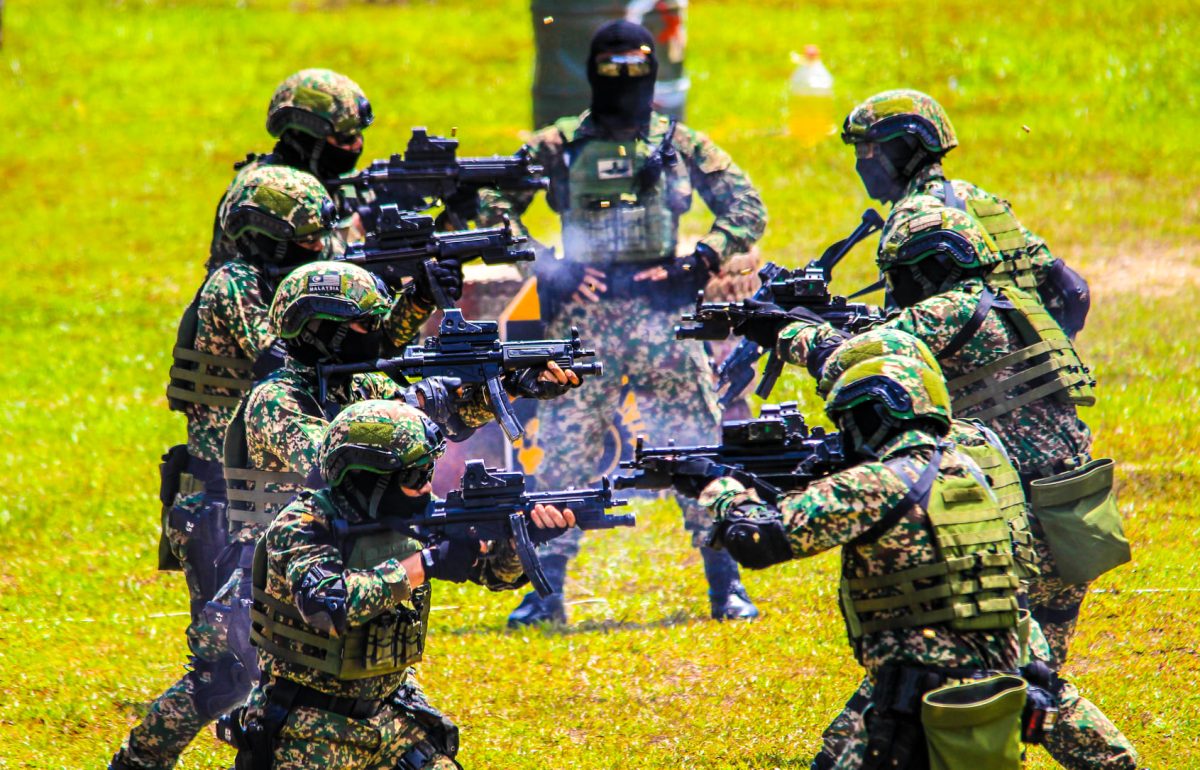
For over two decades, the training camp of the 21 GGK has been a vital institution in the development of Malaysia’s special forces. Initially located in Sungai Udang, the camp has seen the participation of numerous soldiers – volunteers from other special forces units and regular Malaysian soldiers. Brigadier General Borhan bin Ahmad was the first high-ranking officer of the Malaysian General Staff to hold direct responsibility for the development and advancement of the special forces. Under his leadership, new and modern training methods were introduced, and strong partnerships were established with special forces units from the United States, the United Kingdom, Australia, New Zealand, and Indonesia.
As the unit grew and evolved, the initial training facilities and resources at Sungai Udang became inadequate. As a result, the unit was moved to a new base at Imphal Camp, located near Malaysia’s capital city of Kuala Lumpur. The unit later moved again to a base in Kuala Kubu Baru, situated on the shores of the Straits of Malacca. Additionally, the 21 GGK shared facilities at Mersing Base (on the coast of the South China Sea) with the naval special forces unit PASKAL.
In the mid-1981s, an organization known as the 12th Parachute Battalion was established within the 21 GGK, it was quickly disbanded, and its personnel was subsequently deployed to the 21st, 22nd, and 11th battalions.
Basic Commando Course
The Basic Commando Course is divided into several phases:
Training Camp
Basic commando training is conducted at training bases within the unit’s base. The total duration is five weeks. This is the most critical stage in the development of the physical and mental attributes of each individual. Physical training, weapons proficiency, explosives, tactics, field medicine, and the fundamentals of navigation and survival are all part of the extensive training program. Candidates are successively subjected to more difficult and longer-war marches in full gear. The length of the march starts at 4.8 km and increases to 8, 11.2, 14, and finally 16 km. This training phase is selective, and candidates who do not meet the standards are returned to their basic units.
Jungle Training
This phase is organized over 2 weeks and is probably the favorite part of training for almost every candidate. All candidates are subjected to real-life conditions and warfare prevailing in the jungles of Southeast Asia. The emphasis during this stage is on scare tactics, team collaboration, patrolling, organizing strongholds, and individual and group methods of jungle warfare.
Survival and Fitness March
This phase must be completed by all candidates who have “survived” the first two phases. The main feature of this phase is the ancient forest MARCH fighting a length of up to 130 km with a stash of ammunition, food, and water in a weight of 15 kg. Candidates must complete this march in just 36 hours. Those rare individuals who reach the goal stay in this area for an additional seven days without supplies, firearms, or uniforms (in their underwear). Reports indicate that in such circumstances, candidates acquire excellent practical experience and knowledge of survival skills.
Maritime Training
This training phase takes another two weeks, during which candidates are taught and practiced in small craft navigation, long-distance swimming, combat diving, and coastal zone assaults using boats, canoes, and kayaks. As the “thesis” of this phase, candidates must set a time for kayaking a distance of 160 km and successfully perform an attack on a designated location, usually somewhere along the Straits of Malacca.
Pulling & Avoidance
This phase represents one of the final stages of training, in which trainees are taught E & E (Escape & Evasion) fighting techniques. All candidates are divided into small groups and must spend a demanding exercise in which they must contact local “patriotic” forces and checkpoints and avoid enemy patrols and ambushes. Candidates captured by the “enemy forces” are subjected to simulated testing procedures and “torture” that could occur in real-life war conditions. After their “captivity” is complete, they are rescued by their colleagues from the group (which is the primary task) and continue the exercise until the next checkpoint.
This exercise is not limited and lasts as long as necessary for each group to reach the target, the number of captured members, and the duration of their detention. This phase aims to build and strengthen the mental attributes of each individual, build community spirit within the unit, and provide knowledge of how to look captured by the enemy without providing intelligence.
Parachute training
During the parachute training phase, 21 Gerup Gerak Khas (21 GGK) candidates are required to master the basic techniques of parachute jumping. To earn the skydiving certification, candidates must complete at least five jumps, with at least two being night jumps. The most successful individuals may proceed to advanced training in jump techniques with landings on various types of terrain and on water. A few of the best candidates may be chosen for specialized High Altitude Low Opening (HALO), and High Altitude High Opening (HAHO) parachute jumps.
Gear and equipment
Green Beret
The members of Gerak Khas, a special forces unit in Malaysia, have inherited the green beret and Fairbairn-Sykes fighting knife as symbols of their commando qualifications. This is because the first members of the unit received commando training at the British Army Jungle Warfare Training School from the 40 Commando Royal Marines.
Unlike the military forces of the United Kingdom and the United States, where only soldiers, sailors, or marines who have completed the Basic Commando Course or United States Army Special Forces selection and training are permitted to wear the green beret, all members of the 21 SSG (Special Services Group) wear the green beret, regardless of whether or not they have completed the Basic Commando Course. To distinguish themselves from non-commando-trained members, those who have completed the Basic Commando Course may wear a unit-specific beret flash.
